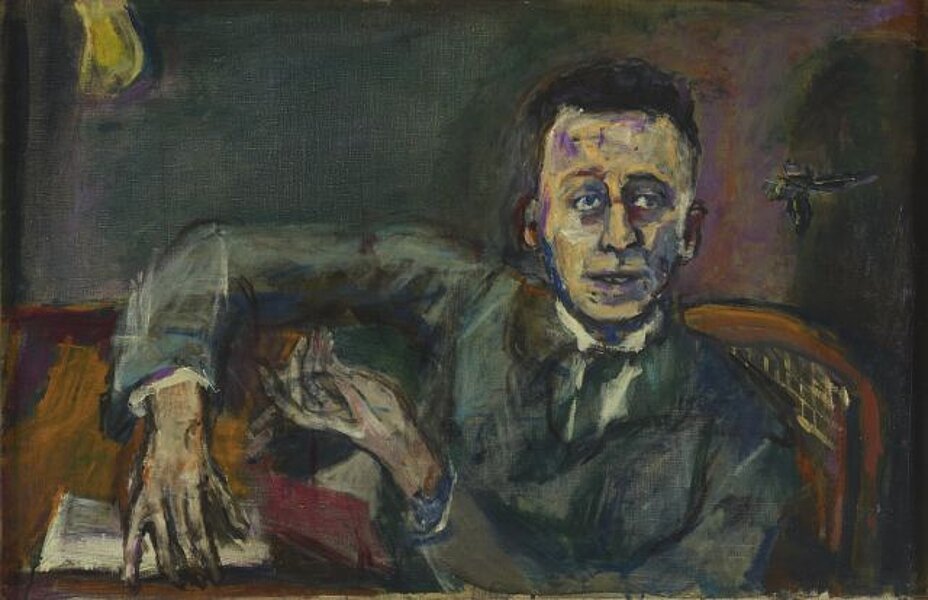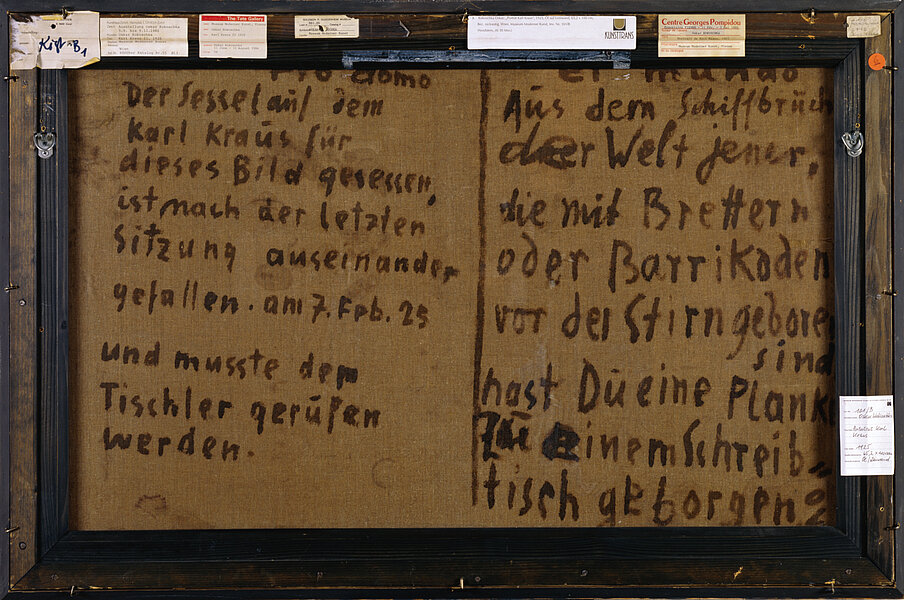
Kokoschka, Oskar
Karl Kraus II
1925
The militant satirist Karl Kraus was famous for his emotive voice with wit in a state of permanent intellectual alertness he liked to trenchantly criticize the social decadence and the decline of language. Oskar Kokoschka portrays him in 1925 as a sensitive artist squirting with nervous energy and wit. Sitting at his desk slightly stooped as was he’s habit. From the dark palette of colors the face stands out for its juxtaposed isles of red and yellow as they were illuminated by the beam of a spotlight. However, this effect is not created by the light source to the left of the portrait, but seems to come from Kraus himself, which together with the butterfly enhances the impression of lively wit. Like an ellipses he reaches out with his arms, one hand touching a book, the other used to recite. The active element which illustrates the intellectual conquest of the world by Karl Kraus is underlined formally by color fields fraying into sketchy emotion around the part of his hands. In his autobiography, Kokoschka notes that the chair had broken in one of the portrait sessions, because Kraus was engaged in too vehement discussion with the architect Adolf Loos. He subsequently wrote on the back of the portrait in appreciation: „In the shipwreck of the world of those who are born thick with barricades of their heads, you have recovered one plank to a desk.“
© mumok – museum moderner kunst stiftung ludwig wien

